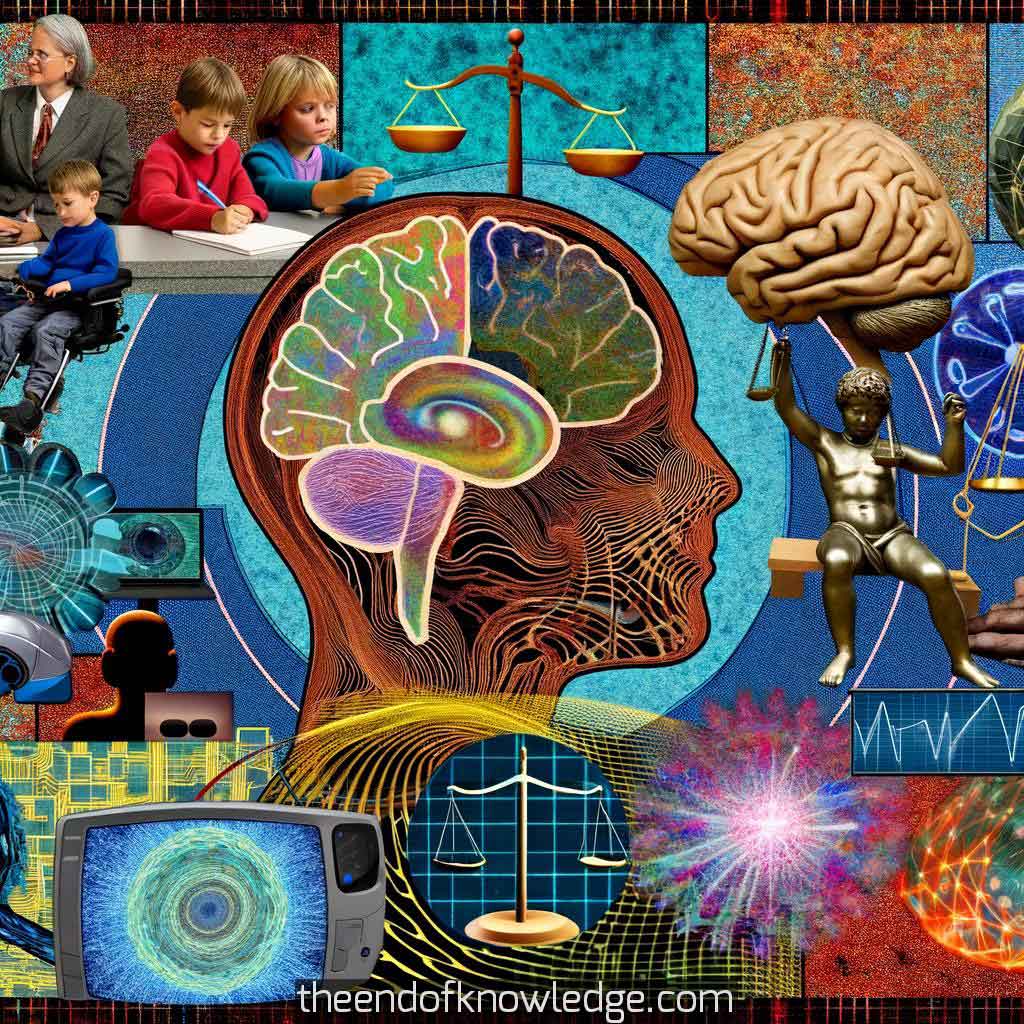 >
>
Concept Graph (using Gemini Ultra + Claude3):
Custom ChatGPT resume of the OpenAI Whisper transcription:
1.- Introduction to David Eagleman and Neuroplasticity: The interview begins with an introduction to David Eagleman, a neuroscientist known for his communication skills and exploration of the human brain's beauty and mystery. He discusses his new book, "LiveWired," which delves into neuroplasticity, the brain's ability to reconfigure itself in response to learning and adapting to the world.
2.- Concept of LiveWired: Eagleman introduces "LiveWired" as a term he coined to describe the dynamic nature of the brain, contrasting traditional static views of hardware and software with the brain's continuous physical reconfiguration.
3.- Brain's Adaptability and Engineering Future: The discussion highlights the brain's unique ability to adapt and function even after significant alterations, such as a hemispherectomy in children, showcasing its malleability and potential implications for future engineering inspired by the brain's design.
4.- Evolution and Engineering Challenges: Eagleman reflects on the evolutionary development of the brain's complex system and the challenges in engineering similar systems. Despite the brain's complexity, he suggests that understanding its blueprints could revolutionize how we approach engineering.
5.- Neuroplasticity Across Lifespan: The interview explores neuroplasticity's variability across different ages and how experiences can influence the brain's development and capabilities, emphasizing the importance of early childhood experiences.
6.- Defining and Understanding Plasticity: Eagleman elaborates on the definition of plasticity, the ability of the brain to change and adapt, and introduces why he prefers the term "LiveWired" to capture the brain's continuous evolution.
7.- Impact of Experiences on Brain Development: He discusses how every interaction and experience can reshape the brain, underlining the brain's lifelong adaptability and the importance of nurturing positive experiences, especially in children.
8.- Brain-Computer Interfaces (BCI) and Future Technologies: The conversation shifts to the potential of brain-computer interfaces like Neuralink and the balance between leveraging technological advances without invasive procedures, highlighting the importance of non-invasive methods for integrating technology with brain function.
9.- The Brain's Ability to Adapt to Technology: Eagleman points out how the brain has effortlessly adapted to new technologies, such as smartphones and the internet, suggesting a natural readiness to embrace and integrate with technological advancements.
10.- Education and Learning in the Digital Age: The discussion concludes this segment with reflections on the transformative impact of digital resources on education, advocating for the benefits of just-in-time learning and the potential for future generations to leverage technology for enhanced learning experiences.
11.- Exploration of Free Will and Neuroscience: The discussion delves into the concept of free will from a neuroscientific perspective, considering how our understanding of the brain might evolve to incorporate new discoveries about consciousness and decision-making processes.
12.- Impact of Neurological Insights on Legal Systems: Eagleman discusses how neuroscience is beginning to influence legal systems, emphasizing the need for a nuanced approach that considers individual brain differences in determining legal responsibility and sentencing.
13.- Neuroscience's Role in Understanding Behavior: The interview covers how neuroscience helps us understand behaviors traditionally considered moral or ethical choices, suggesting a biological basis for actions, which has implications for both legal judgments and societal norms.
14.- The Brain's Adaptability to New Situations: Eagleman highlights the brain's remarkable ability to adapt to new situations and challenges, suggesting that this flexibility has profound implications for learning, technology integration, and recovery from injury.
15.- Brain-Computer Interfaces (BCI) and Rehabilitation: The potential for BCIs to revolutionize rehabilitation for neurological injuries is discussed, with an emphasis on the possibilities for enhancing human capabilities and the ethical considerations of such technologies.
16.- Sensory Substitution and Neuroplasticity: The conversation includes examples of sensory substitution devices developed by Eagleman's lab, illustrating the brain's ability to interpret novel sensory information, showcasing its plasticity and potential for adapting to new inputs.
17.- The Societal Impact of Neuroscientific Discoveries: Eagleman reflects on how advancements in neuroscience could reshape our understanding of human nature, identity, and the societal structures designed to manage behavior, including education, justice, and healthcare systems.
18.- Ethical Implications of Neuroscience: The interview touches on the ethical implications of deepening our understanding of the brain, including privacy concerns, the potential for manipulation, and the need for ethical frameworks to guide neurotechnology development.
19.- Future Directions in Neuroscience Research: Eagleman discusses the future of neuroscience, highlighting the importance of interdisciplinary approaches, the potential for discovering new forms of communication and interaction, and the ongoing challenge of mapping the brain's complexity.
20.- Neuroscience and the Search for Understanding Consciousness: The conversation concludes with a discussion on the quest to understand consciousness, considering how neuroscience might unravel one of the most enduring mysteries of human experience, with implications for artificial intelligence, medicine, and philosophy.
Interview byLex Fridman| Custom GPT and Knowledge Vault built byDavid Vivancos 2024